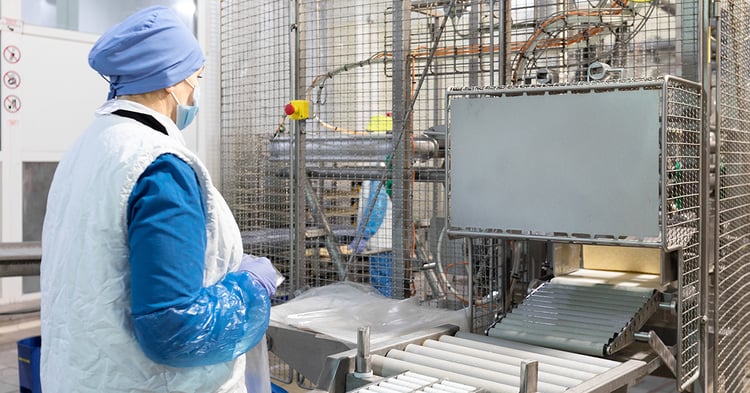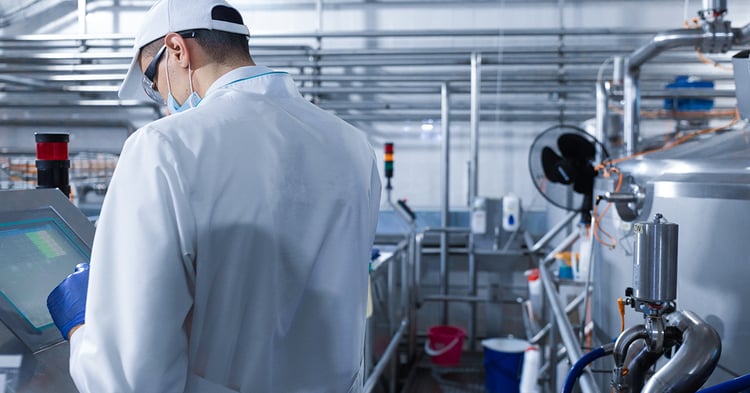![]()
With the fourth industrial revolution, more smart factories are popping up worldwide. This industrial revolution is characterized by digitalization and advanced technology and is perfectly embodied by smart factories. As we previously discussed in our blog about smart factories, these factories are made up of machines and devices that are connected and optimized for better manufacturing processes.
The hallmark of smart factories is real-time data. One thing that elevates how smart factories work is their ability to leverage accurate real-time insights to improve a factory’s shop floor. Real-time data is used to change how factories manufacture their products and how companies can continuously cater to the consumer’s ever-evolving demand.
In this blog, we will discuss the various ways how real-time data can enhance your smart factory and why you should pay attention to them.
Why Real-Time Data is Essential for Manufacturing
Before diving into the many ways real-time data can improve your smart factory, there is a need to emphasize the importance of real-time data for the manufacturing industry.
A simple production mishap because of the inventory can often happen. A few missing components can instantly derail the whole operation. However, the presence of real-time data can immediately fix the problem. It can quickly update operators and production managers on possible problems they can encounter. With their smart devices, all the employees can simultaneously be aware of everything happening during the production process. Real-time data can also show supervisors actionable data to help them make better decisions for their shop floor.
Real-Time Data Enhances Your Smart Factory
There are many ways that real-time data can help run your smart factory more efficiently. By relying on real-time data, you can access more information that can give you better insights on how to create a better manufacturing process.
Real-Time Data Makes for Better Decisions
Integrating real-time data in your decision-making process helps you make better decisions for your business. Assessing your production line and financial information with real-time data can give you a way to make better plans and strategies regarding your shop floor. It allows you to make data-driven decisions with solid foundations. To add, this would also help you grow because you are more likely to be confident with your decisions if it is based on facts and accurate numbers.
Real-Time Data Can Issue Preventive Measures
In establishing your smart factory, make sure that real-time data is combined with predictive analytics. This makes it possible to predict when a machine is in need of maintenance or repairs. This preventive measure can save you from having downtimes that can negatively affect the productivity of your production line. In addition, having this real-time data can help you look after your machines and ensure that they are in great working condition for a long time.
Real-Time Data Can Improve Product Quality
Having real-time data offers a real-time view of the shop floor. This will assure you that quality is being monitored throughout the stages of your production. This doesn’t just apply to the finished product – it also includes the machines, operators, work centers, and more components of the entire production line. Real-time data helps you track the quality of performance to help you know where to improve and where problems remain.
Real-Time Data Decreases Waste
A problem that most manufacturers encounter in their manufacturing process is waste. This common problem can easily be tackled by looking at the real-time data of your smart factory. With data analytics, real-time data can monitor shop floor activity and give business insights into optimizing the efficiency of your production line. With this, the shop floor is always visible and operators are more accountable for possible downtime. This also eliminates material waste as the insight from the real-time data can give actionable solutions against this.
Real-Time Data Helps With Quality Audits
Quality auditing is an examination of a company’s quality management system (QMS). In some manufacturing industries such as those involving the production of food and medical devices, this is upheld in higher regard. Stricter compliance requirements demand internal quality audits to assure the quality of goods. Here, real-time data improves how this auditing is done. As everything is already tracked, monitored, and recorded, companies would only need to collate and review the information.
Real-Time Data Enhances Overall Equipment Efficiency
To improve the overall productivity of the whole production process, it is a must to enhance overall equipment efficiency (OEE). The machines that contribute greatly to the shop floor must be maintained in good working condition. With the help of the smart factory, all machines are connected to one platform that can evaluate machine data for continuous improvement. This real-time data will give operators information concerning when machines need to be replaced, reviewed, or repaired.
Real-Time Data Improves Scheduling
Schedules are essential in the manufacturing process. Inaccurate schedules will lead to various production and supply problems. Hence, real-time data is used to give accurate production schedules and timeframes. The data can also be used to quickly adjust dates when needed and keep everyone on track.
Real-Time Data Assists in Inventory Management
Real-time data is the key to having an optimized inventory management system. With real-time monitoring, you can eliminate overstocking and prevent understocking. It also assists in managing the demand – especially when fielding consumers who want customization at the highest quality. Additionally, real-time data gives accurate information about supplier inventory positions to help make your company make better decisions.
Maximizing Real-Time Data
The efficiency of manufacturing can hinge on how your smart factory operates. Having a highly-digitized and connected factory allows you access to a better operating system, but utilizing real-time data gives you more control over what happens on your shop floor. It gives you a way to create better decisions, shift strategies, and adapt whenever demand calls for it.
Real-time data, like most things, is only effective when it's used to its most potential. If you factor real-time data into your operations and harness it properly, there are more things you can do to enhance how your smart factory works.


